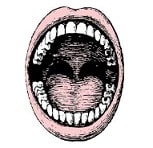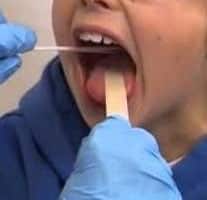 The term fauces , whose etymological origin is found in the Latin language, refers to the posterior sector of the mouth of a mammalian animal . The fauces begin at the soft palate and extend to the area where the esophagus begins.
The term fauces , whose etymological origin is found in the Latin language, refers to the posterior sector of the mouth of a mammalian animal . The fauces begin at the soft palate and extend to the area where the esophagus begins.
The mouth is the cavity where the teeth and tongue are located. This is the upper opening of the digestive tube : food enters through it. The posterior part, in humans and other mammals, is known as the fauces.
It should be noted that the palate is the inner and upper part of the mouth. The soft palate, where the fauces begin, is the membranous and muscular curtain that allows the separation of the oral cavity and the pharynx (the sector of the digestive tube that continues to the mouth).
The fauces, in short, begin at the soft palate, continue in the pharynx and reach the beginning of the esophagus (the section of the digestive tube that develops between the pharynx and the stomach ).
The opening located between the posterior region of the mouth and the aforementioned pharynx is called the isthmus of the fauces . This isthmus is surrounded by the velum and the pillars of the palate and, below, by the base of the tongue .
In colloquial language, the mouth of any animal is usually called the maw, especially if it is a ferocious or wild animal. For example: “At the circus I saw how a man put his head into the jaws of a lion” , “The legs of a bird protruded from the jaws of the crocodile” , “The young man ran and ran to avoid falling into the jaws of the predator ”. ” .
Jaw swab
 In the field of clinical medicine, there is an analysis that is known by several names, including jaw swab , pharyngeal swab , and rapid antigen test . This is a procedure used to detect the bacteria called group A streptococcus , which causes diseases such as scarlet fever and throat infection.
In the field of clinical medicine, there is an analysis that is known by several names, including jaw swab , pharyngeal swab , and rapid antigen test . This is a procedure used to detect the bacteria called group A streptococcus , which causes diseases such as scarlet fever and throat infection.
Among the most common symptoms of scarlet fever and throat infection we can mention pain and fever. It is important to note that these diseases are spread very easily. To treat them, antibiotics are usually indicated.
The throat swab begins when the healthcare provider gently passes the cotton tip of a long swab down the back of the throat and over the tonsils. If the doctor does not act skillfully and gently, this can be quite annoying for patients , especially the little ones, and even cause retching.
Depending on the infrastructure of each medical center, the results of the analysis can be received in a matter of minutes or hours: if it is positive, then the patient has a streptococcal infection and the professional can proceed to prescribe appropriate treatment; On the contrary, a negative result may lead to an analysis called culture to completely rule out the presence of this bacteria.
It is worth mentioning that in a case of streptococcal throat infection, the milder medications used to calm irritation are not effective, and this is one of the reasons why a throat swab is necessary. The symptoms of this disorder are the following:
* difficulty swallowing, accompanied or not by pain ;
* sore throat;
* fever;
* inflammation of the nodes in the neck area, or a sensation of pain when touching them;
* vomiting or nausea;
* skin rashes;
* stomach pain or headache;
* lack of appetite;
* redness and swelling of the tonsils;
* white spots on the throat and tongue.
